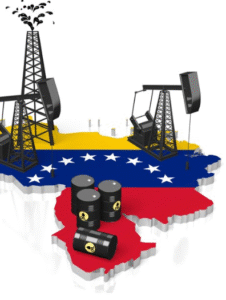$XOM $GLD $BTC
#commodities #oilprices #metals #goldrally #energysector #crudeoil #commoditiesmarket #Chinademand #supplyglut #marketanalysis #inflationhedge #2025forecast
Crude oil prices faced strong headwinds last year as weak demand from China coincided with a persistent global supply glut. These factors combined to weigh heavily on energy markets, leading to a substantial decline in oil prices. With China’s economic activity struggling to rebound post-pandemic, its voracious appetite for commodities, including oil, has dampened. Analysts predict that this subdued demand could persist through 2025, further pressuring oil prices. Additionally, supply-side challenges persist as production cuts from OPEC+ nations have not been rigorous enough to counterbalance the glut, leaving a surplus that continues to weigh heavily on the market.
Looking into the broader commodities sector, 2025 could be a challenging year for several raw materials tied to economic growth uncertainties. Industrial metals, for instance, have experienced reduced demand due to tightened monetary policies in the United States and Europe, which have slowed infrastructure investments and manufacturing output. Copper, often viewed as a barometer for global economic health, has seen price stagnation, amplifying investor concerns about global GDP growth. However, within the metals spectrum, gold has emerged as a standout performer. Its appeal as a hedge against inflation and macroeconomic uncertainty has bolstered its demand, with some analysts projecting record price levels as central banks increase their reserves to diversify away from the U.S. dollar.
The energy sector’s outlook remains complicated, especially as geopolitical instability in oil-producing regions adds further uncertainty to production forecasts. In the wake of slowing demand growth, some U.S. shale players have scaled back their investments despite attractive cash flow yields. This methodical reduction in production aims to prevent oversupply from further eroding prices. Simultaneously, energy transition policies promoting renewable energy continue to shift capital investment away from fossil fuels, presenting a secular challenge to crude oil’s long-term demand profile. Nonetheless, supply-demand imbalances in the interim could sustain volatility, allowing traders to capitalize on short-term movements stemming from news headlines or geopolitical events.
Interestingly, a stark divergence has emerged between traditional commodities like oil and industrial metals compared to gold’s rally. Market participants appear increasingly inclined to turn to safe-haven assets like gold amid global uncertainty. Gold’s resilience comes as inflation fears linger and central bank monetary policies near a tipping point. Furthermore, digital assets such as $BTC, often referred to as “digital gold,” could potentially benefit as investors seek alternatives to traditional commodities. As we move into 2025, portfolio diversification strategies are likely to incorporate a heavier weighting toward assets with inflation-hedging potential—further underlining gold’s continued appeal and the potential for a prolonged record-high rally.











Comments are closed.